6 Major Ports in Iran
The Islamic Republic of Iran lies in West Asia at the crossroads of major trade routes passing through the Caspian Sea and the Persian Gulf. It has large reserves of oil and natural gas and is an energy superpower. However, it is still categorised as an upper-middle-income country by the World Bank.
Though Iran has diversified its economy by developing biotechnology, automobile manufacturing, pharmaceutical and petrochemical industries, the economy is still largely reliant on oil exports.
Most of its international trade is conducted through its seaports. Due to a lack of funds, upcoming ports like Chabahar are being financed by other countries and international organisations. Nonetheless, Iran realises the strategic importance of its ports and is carrying out expansion and modernisation programs at the major terminals and harbours for driving economic growth.
Let us explore the features of the 6 major ports in Iran.
1. Port of Bandar Abbas
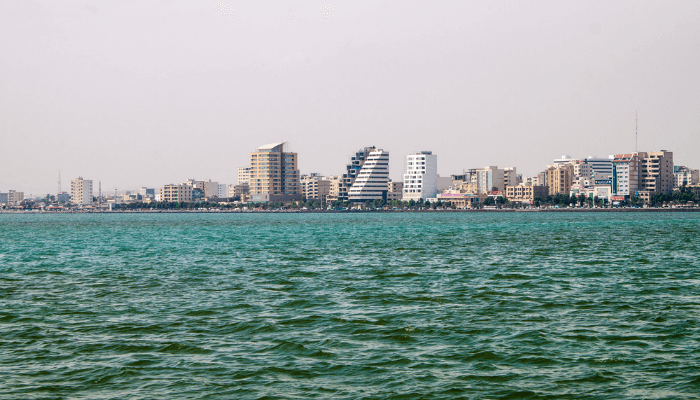
Bandar Abbas port is the main maritime outlet of Iran as it lies on the coast of Hormuz Bay across the Hormuz islands. The principal port of the country is linked to Tehran and major Iranian cities by roadways and railways. It ships chrome ore, red oxide, cotton carpets, marble blocks, petroleum products, dried fruits, pistachios, nuts, Kerman rugs and imports cotton piece goods, tea, sugar, matches, fertilisers, grains, construction equipment and woollens. The port handles 37,000,000 tonnes of cargo and 1,000,000 TEUs annually.
Port Layout
The harbour is divided into two areas; the main port called Shahid Rajaee Port Complex and the old port of Bandar Shahid Bahonar. Apart from being an industrial port, it also serves as a strategic naval base and was categorised as a Special Economic Zone by the nation’s high council. It is a major gateway for goods moving to and from the Central Asian countries and has trade links with Europe, Africa, Southeast Asia and the Americas.
Main port
The Shahid Rajaee port lies at the foot of the Gachin and Kashar mountains in the western part of the city. It covers 1,600,000 m2 of land out of which 164,000 m2 is dedicated to warehousing and storage facilities. A huge grain silo, a fishing harbour and additional cargo storage areas are being built at the port as part of the expansion project. Recreational facilities are also offered at the port’s Seamen’s club.
It has ten general cargo berths covering 2000 m with a water depth of 12 m. Its container terminal has 5 dedicated berths and special cargoes including dry bulk are handled at four wharves adjacent to the grain storage area. Petroleum products are loaded at the two multipurpose wharves whereas crude oil is handled at the Abbas Foulad Oil Terminal and the STC Quay, a private oil transit berth. It also has a RORO berth and a passenger terminal serving barges up to 240 m long. This port can accommodate 100,000 DWT bulk carriers and 80,000 DWT tankers.
Old port
Situated north of the Qeshm Island, the Shahid Bahonar port area covers 31 hectares including 9 hectares of warehousing area. It is important for the region’s economy and houses many important industrial units like the Bandar Abbas Refinery, one of the biggest oil refineries in Iran.
The port contains 6 conventional berths covering 1050 m, two 390 m oil jetties and 3 multipurpose wharves for handling miscellaneous cargoes. An ore-loading berth measuring 190 m deals with bulk ore shipments. A passenger terminal and a barge jetty are also located in the old port.
2. Port of Amirabad
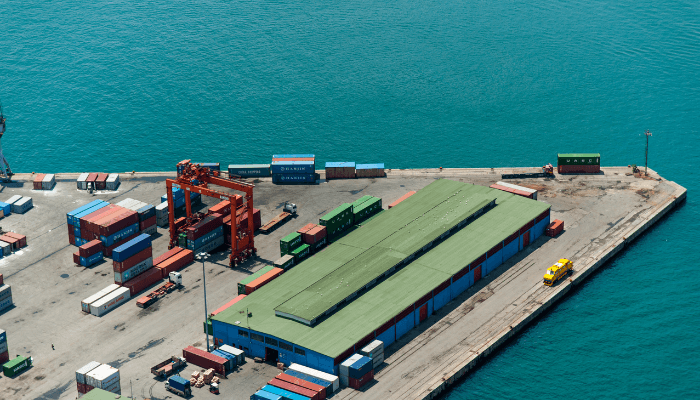
Amirabad port is located in the Mazandaran Province on Iran’s Caspian Sea Coast. It is a multipurpose facility and incorporates the Amirabad Special Economic Zone. The port was established to take advantage of its favourable geographical location by handling significant volumes of cargo traffic passing through the Caspian Sea.
Oil exploration companies and shipbuilding industries in the nearby city of Neka contribute to the national economy. The port also serves these units by supplying key raw materials to these facilities. The main cargoes handled at Amirabad port include containers, oil, Ro-Ro and dry bulk.
The port city houses many tourist attractions like the Miankaleh island, the historic place of Abbas Abad and the Lapo Swamp. Amirabad port is Iran’s only northern port that is integrated into the national railroad system and is easily accessible to the Central Asian region, the Far East, the Middle East and Europe via seaways as well as land routes.
Port Specifications
It consists of 33 wharves for loading and discharging diverse cargo types. The port was designed to handle around 5 million tonnes of oil and commercial goods annually, It is linked to major trade and industrial centres and also handles Roro transhipments. Much of the port area is dedicated to the region’s oil refineries and petrochemical plants.
Storage facilities
It also contains a 16,000 square metres stacking warehouse, an 850 m2 directory warehouse and three warehouses covering 30,000 m2. Additionally, the port provides 9 million m2 of backup area and a million sq m of the operational area. The authorities are planning to construct three designated port areas for serving the oil industry. An 8000-ton silo, four transit warehouses and 35 new berths would be constructed in future.
3. Port of Anzali
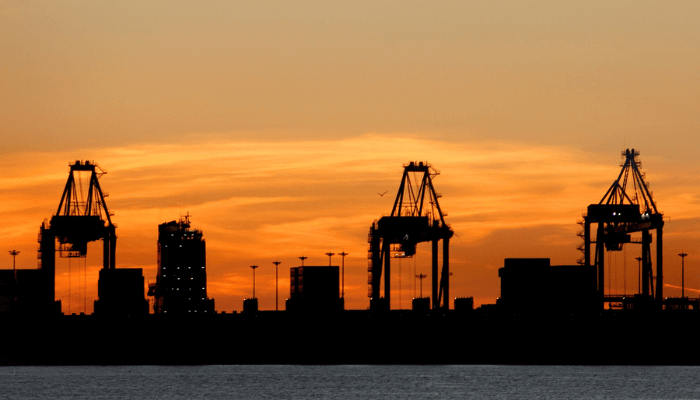
Anzali port is the main gateway for Northern Iran and a popular seaside resort on the Caspian Sea. It is just 40 kilometres from the city of Rasht, the capital of the Gilan province and 60 kilometres from Tehran. Known as the World Capital of Precious Caviar, Anzali port was established in the early 19th century and was a major trading post in mediaeval times. It was also occupied by the Russians in 1920 but their control ended in 1921.
The biggest port on the Caspian Sea, it has facilities for handling general cargo, breakbulk, liquid cargo, roro and containers. It is known for exporting dried fruits, construction material, chemicals, home appliances, vegetables, fruits, heavy machinery, vehicles, minerals etc. Main imports comprise non-iron metals, containerised goods, spare parts, rubber, plastics, barley, wheat, fibre, Cloth etc. Around 4 million tonnes of cargo and over 1300 vessels are handled at the port every year.
Port Layout
Anzali port requires regular dredging since it is positioned amidst sandy peninsulas. Hence the access channel has irregular water depth and the harbour is protected by two breakwaters. Cargo vessels with a maximum LOA of 154 m and a beam of 15 m can enter the port facility.
It covers 71 hectares and comprises 11 berths with a total berthing line of 1200 m2 and alongside depths of 6.5 m, capable of accommodating 5000 DWT ships. Most of these facilities including an oil depot and a fishery station are situated on the eastern side of the entrance channel. The port incorporates 23,000 m2 of covered warehouse space, 50 hectares of open yards and a 1220 m2 hangar.
Port modernisation started after the Second World War which increased the volume of traffic handled at the port. To boost productivity, the regional government opened a Free Trade industrial zone near the port premises in 2003 for attracting foreign investors and multinational corporations.
4. Port of Nowshahr
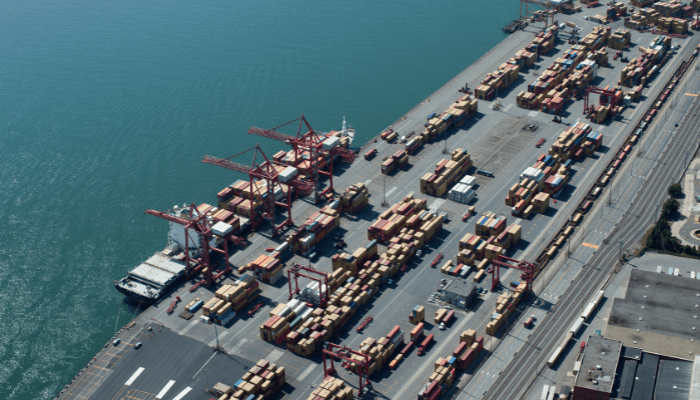
Nowshahr port spans 44 hectares of land area consisting of numerous jetties, coastal as well as offshore equipment and 15-hectare storage space. The facility hosts more than 500 ships annually. After the completion of the expansion project, 3 new wharves were built and the quay depth was increased to 7.5 m for receiving larger vessels.
It is located on the southern coast of the Caspian Sea, just 194 kilometres north of Tehran. A multipurpose facility, it incorporates the Khazar Special Economic Zone and is known for shipping fresh fruits and vegetables, nuts, minerals and dairy products. It imports chemicals, oil products, steel, spare parts, metal, construction equipment and timber. Approximately 1,500,000 tonnes of cargo pass through this port annually.
It is the nearest to the capital, the main commercial centres of Iran and also the Central Asian markets and Eastern Europe. The international airport is just 2 kilometres from the port area. Nowshahr has many future prospects and the authorities plan to develop the port hinterland, construct additional commercial and petrochemical berths, establish value-adding processing units, cold storage facilities, modern export terminals and grain silos.
5. Port of Chabahar
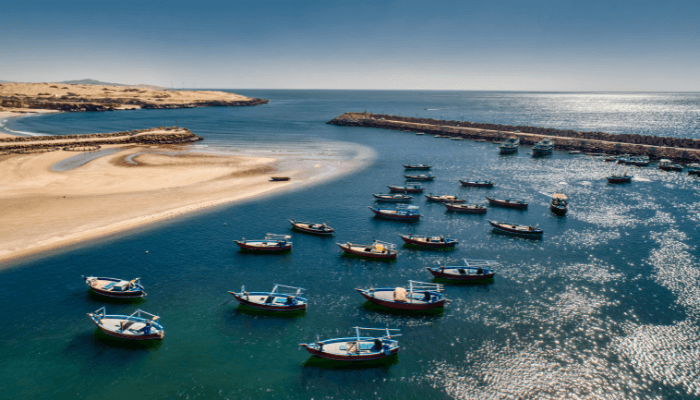
Chabahar port lies in southern Iran facing the Gulf of Oman, close to the Sistan and Baluchistan provinces. It is the only Iranian port having direct access to the Indian Ocean. Chabahar is an important transhipment centre on the north-south transport corridor and has the capability to transform into a major commercial hub of the region.
The main cargo handled at the port includes bagged grains, fertilisers and containers. Some cargo ships are unloaded at the anchorage and goods are taken to the port via barges. It is made up of two-port complexes; the Shahid Kalantari port and Shahid Beheshti port. Approximately 1,400,000 tonnes of cargo and over 1600 vessels are handled at the facility annually.
Since it is close to Afghanistan, Pakistan and India, it plays a key role in international geopolitics. Two-port berths were developed by India as part of a bilateral agreement between the two nations. India also financed the port development for accessing the Afghan and Central Asian trade markets through Chabahar, without using the routes traversing Pakistan.
Port Specifications
The Shahid Beheshti port consists of 2 container berths, each covering 360 m. These can accommodate ships carrying 4000 TEUs, with an LOA of 320 m and a draft of 16 m. It has 3 multipurpose wharves spanning 1320 m2 for berthing 100,000 DWT cargo carriers. A 185 m long minerals berth and a 250 m oil berth were also constructed in the first phase of expansion which increased the annual port capacity to 8.5 million tonnes.
Four phases are expected to be completed by 2024 which would increase the port’s cargo capacity to 86 million tonnes. The Shahid Kalantari port has 5 berths out of which four handle traditional vessels and barges while the fifth is the multipurpose wharf, capable of receiving 40,000 DWT ships.
6. Imam Khomeini Port
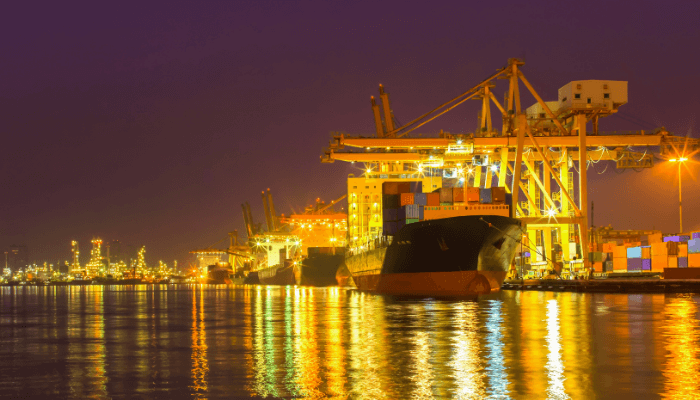
Located at the edge of the Persian Gulf near the Khormusa waterway, the Imam Khomeini port covers 11,041 hectares of land area and receives oil tankers, bulk and container carriers arriving from the Persian Gulf, Oman gulf, Hormuz Strait and the Indian Ocean. It is the most modern port in Iran and also the largest in terms of port area.
Although it handles minerals, ores, general cargo and containers, Imam Khomeini is known as a major petrochemical export facility. An important rail terminus, it handles around 16,500,000 tonnes of cargo, 40,300 TEUs and 6300 passengers annually.
The port is well linked to the national railway network and roads leading to major industrial centres and Iranian cities. It has trade connections with Iraq, Caucasus, Turkey and Eastern Europe.
The port offers docking and repackaging services; container stuffing and stripping stations are present in the container handling area. The authorities plan to expand the port further by constructing additional wharves and establishing shipbuilding, dry docks and petrochemical industries in the vicinity.
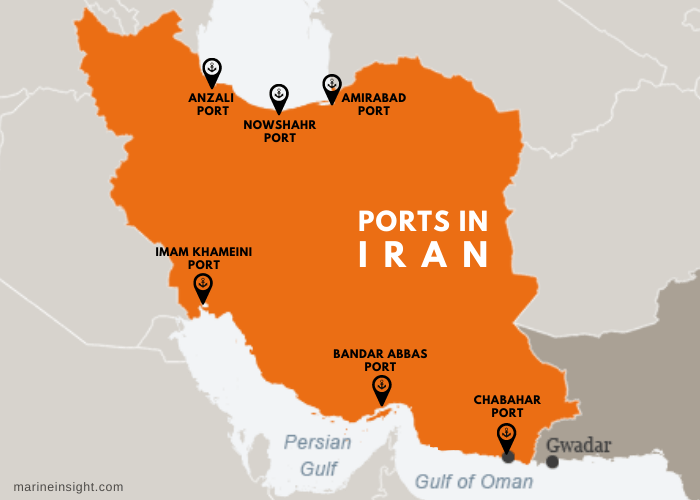
Disclaimer :
The information contained in this website is for general information purposes only. While we endeavour to keep the information up to date and correct, we make no representations or warranties of any kind, express or implied, about the completeness, accuracy, reliability, suitability or availability with respect to the website or the information, products, services, or related graphics contained on the website for any purpose. Any reliance you place on such information is therefore strictly at your own risk.
In no event will we be liable for any loss or damage including without limitation, indirect or consequential loss or damage, or any loss or damage whatsoever arising from loss of data or profits arising out of, or in connection with, the use of this website.
Do you have info to share with us ? Suggest a correction
Disclaimer :
The information contained in this website is for general information purposes only. While we endeavour to keep the information up to date and correct, we make no representations or warranties of any kind, express or implied, about the completeness, accuracy, reliability, suitability or availability with respect to the website or the information, products, services, or related graphics contained on the website for any purpose. Any reliance you place on such information is therefore strictly at your own risk.
In no event will we be liable for any loss or damage including without limitation, indirect or consequential loss or damage, or any loss or damage whatsoever arising from loss of data or profits arising out of, or in connection with, the use of this website.
Latest Maritime Knowledge Articles You Would Like:
Subscribe To Our Newsletters
By subscribing, you agree to our Privacy Policy and may receive occasional deal communications; you can unsubscribe anytime.
















I like these topics very much. I would like to see such topics daily, this post is very good indeed. There are people like you in the world who put forth their views. Thank you so much for posting such a great post.